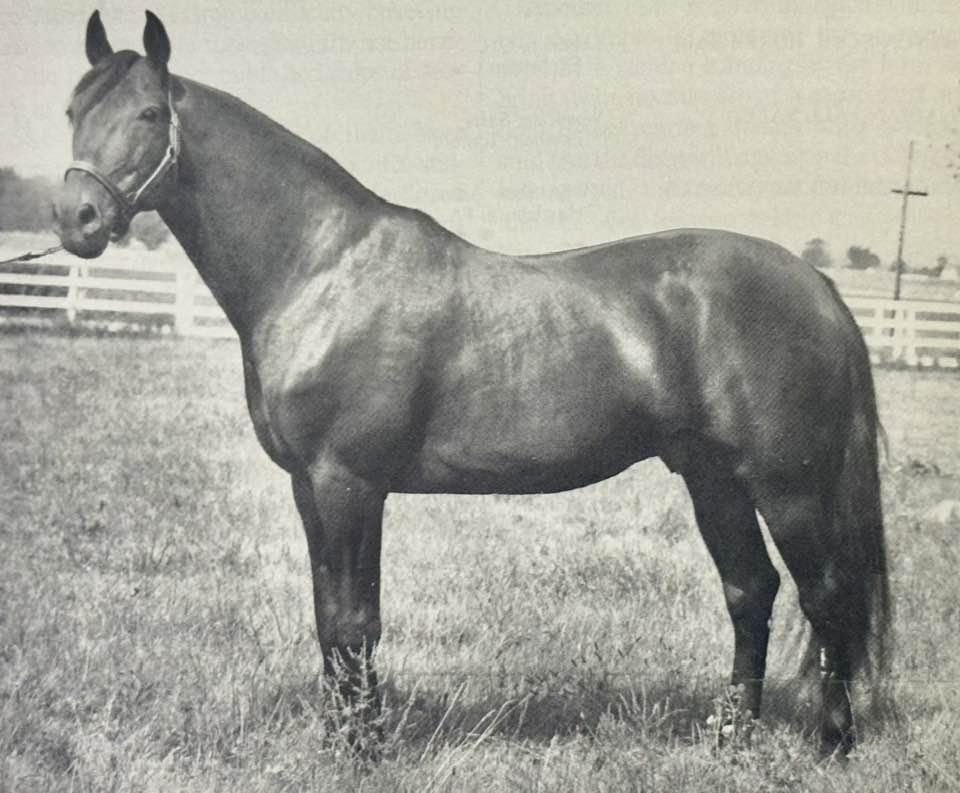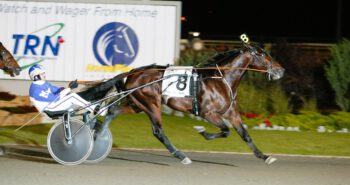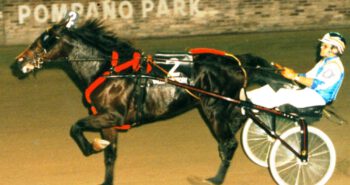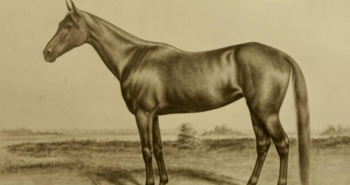The number of US-born stallions exported to Europe is staggering high, with very few horses going the other way for stallion duty. While some think European-born stallions in the US is a very recent thing, history shows that is not the case. In fact, the first European trotting stallion in the US arrived just a few years after the second World War. The story of Quel Veinard is both strange and fascinating, but more than anything also the story about an almost forgotten horse.
Though not the best horse in the French 1938-crop, Quel Veinard more than held his own. He finished second in the group 1-races Criterium des 4 Ans and Prix de Selection in 1942. The following year he won the Prix Marcel Laurent, while in 1944 he won the Prix Doynel de Saint-Quentin. Three years later he stood stud for the first time. In this third crop, born 1948, he sired the outstanding champion Elope, winner of Criterium des 3 Ans, Criterium des 4 Ans and Prix de Vincennes. The crop also contained Ettlingen, fourth in the 1955 Prix d’Amerique. When Elope was four-years-old, back in 1952, Quel Veinard was on the verge to establish himself as one of the most popular stallions in France.
Thinking outside the box
At that time, Leo McNamara at the Two Gaits Farm in Indiana was busy thinking wildly outside the box. Concerned with the large degree of inbreeding on both the Axworthy and Peter the Great-lines, McNamara had gotten the seemingly crazy idea to bring in a foreign stallion that could act as a complete outcross alternative. Not speaking a word of French, he went to European with the French-speaking Woody Lawlis, then associate editor of The Horseman & Fair World. On a long scouting journey they looked at many stallions. Some were simply not for sale, while others did not pass the duo’s conformation standards.
In the October 1986 Hoof Beats article The Noble Experiment, written by editor Dean Hoffman, McNamara’s son recalls “seeing a son of Kairos, a chestnut horse with a Roman nose that he admired very much but since the horse had yet to prove his mettle, he passed on him.” The description seems to perfectly fit the 1947 Criterium des 3 ans winner Abd El Krim D, a chestnut son of Kairos who was the only chestnut son of Kairos standing stud in 1951 – and an unproved stallion at the time. McNamara was also blended by the above-mentioned Elope, but the owner did not want to sell. With McNamara preferring a proven stallion they passed on Elope and instead looked at his sire, which is how they arrived at Quel Veinard. What they did not know in 1952 was that the stallion’s G-crop, born 1950, included Gutemberg A, winner of the 1955 Elitlopp.
A judicious selection
As quoted in the same Hoof Beats article, Lawlis would later write an article in The Horseman & Fair World declaring that “We consider this a move in which every chance for success has been weighed and in which 99 percent of that chance has been removed by the judicious selection of the outstanding young male of the French trotter.” As Hoffman pointed out, that left just a “pesky one percent” – and that one percent turned out to be what ruined the beautiful experiment.
Quel Veinard was well received as an alternative and even Lawrence Sheppard at Hanover Shoe Farm sent a few broodmares from Pennsylvania to the imported stallion. But the Quel Veinards proved most useful as roadblocks on the trotting tracks and he fell out of favor relatively quickly. Ralph Baldwin, who trained for Two Gaits, didn’t like the Quel Veinards and as Hoffman wrote in his article, if a master trotting trainer like Baldwin couldn’t make trotters out of the them, who could? No wonder Hoffman concluded, “as it turned out, no one.” Despite high expectations, the Quel Veinard foals in the US were almost all huge disappointments and Lucky Lure, with earnings of $94.882, is the only one that can be considered a good trotter of her day, though a few others eventually developed into decent older performers.
Back in Europe, the sireline through Quel Veinard had several highs in the next decades. Elitlopp-winner Gutemberg A. sired Patara, winner of the 1964 Criterium des 5 Ans, who in turn sired High Echelon. The latter won numerous big races, most notably the 1979 Prix d’Amerique.
quel veinard
Bay colt born in Normandy, France in 1938. Unknown date of death.
Telemaque V – Tradition (Kentucky)
1.27,0 (2:20)
Breeder: Gabriel Moreau
Owners: Gabriel Moreau, Two Gaits Farm
Trainers: –
Drivers: –
Groom: –





